The French guest on your site is the Muscat de Provence pumpkin: what is it good for and how to grow it correctly
The Muscat de Provence pumpkin got its name from the region of the same name in the south of France. Provence is famous for its herbs, cheeses and grapes. Butternut squash is no exception. The sweet taste of the vegetable was liked by many. In order not to look for Muscat de Provence on supermarket shelves, summer residents prefer to grow it in their gardens. Why culture is so loved in Russia, and how to get a good harvest, read in our article.
Description of the pumpkin variety
All muscat varieties are distinguished by their rich color. These vegetables are the sweetest of all pumpkin varieties and have fleshy and juicy pulp. The culture is unpretentious in care; it prefers a mixture of loamy and sandy loam soils.
Hybrid f1
Muscat de Provence is the result of the work of French breeders. They brought out frost-resistant variety with very thick skin. In addition, the plant is not afraid of drought or heat, so Muscat de Provence is grown in any region of Russia.
As befits a hybrid, the variety is resistant to such common diseases as white rot or bacteriosis.
Interesting! The manufacturing company Clause Tezier has been around for over 200 years and is considered a recognized leader in the breeding market. In addition to pumpkin, breeders create high-quality and tasty varieties of peppers, cabbage, melon, watermelon and zucchini.
Distinctive features
The variety is mid-season, the harvest ripens in 115 days. It is planted in open ground or in greenhouses.The plant is powerful, there are many leaves. Muscat de Provence shows high and stable yields, responds well to organic feeding, and is often grown not only for personal consumption, but also for sale.
Fruit characteristics and yield
Pumpkins are large and brown-orange in color. The surface is hard and ribbed. The weight of one vegetable is from 5 to 10 kg, the diameter is about 50 cm. The pulp is bright orange, with a high sugar content. Muscat de Provence keeps well. From 1 sq. m summer residents receive about 40 kg of beautiful and tasty vegetables.
Interesting! Due to its appearance, the Muscat de Provence pumpkin is perfect for creating Halloween lanterns. According to legend, such lamps drive away evil spirits from the house.
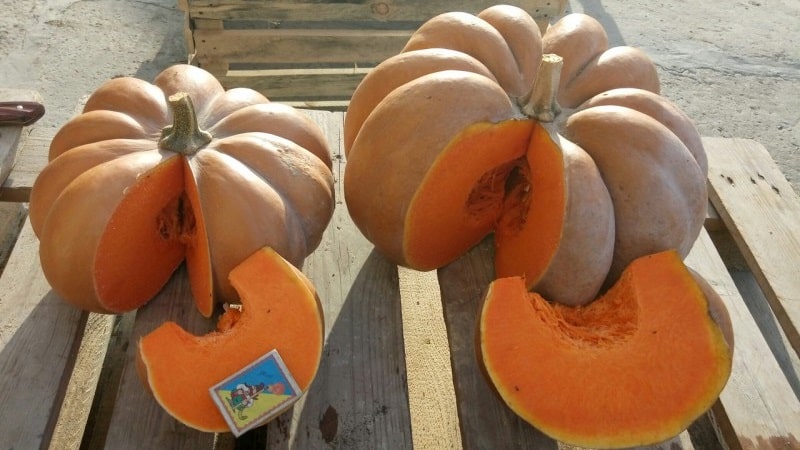
How to grow
Planting and growing the Muscat de Provence variety is an exciting experience. If all the rules are followed, pumpkin patches reward you with a rich and tasty harvest. Let us next consider the ways in which summer residents plant vegetables and how they care for them.
Planting by seeds
The first method involves planting seeds immediately in an open priming. It is most suitable for gardeners from the southern regions of the country, where the soil is more fertile and the climate is warmer. The seed planting technology is as follows:
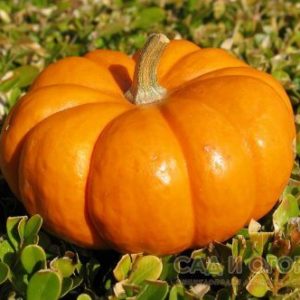 Seed disinfection. Buy seeds from trusted places, pay attention to the safety of the packaging. Inspect the material for external abnormalities. Throw away spoiled seeds that have stains or scratches. Disinfect high-quality ones in a solution of hydrogen peroxide, after placing them in a fabric bag and immersing them in liquid for 5 minutes. Then remove from the bag, place on clean gauze and dry.
Seed disinfection. Buy seeds from trusted places, pay attention to the safety of the packaging. Inspect the material for external abnormalities. Throw away spoiled seeds that have stains or scratches. Disinfect high-quality ones in a solution of hydrogen peroxide, after placing them in a fabric bag and immersing them in liquid for 5 minutes. Then remove from the bag, place on clean gauze and dry.- Hardening of seeds. Place the material in the freezer tray and leave it there for 20 hours. Then remove the seeds and leave them at room temperature for 5 hours before placing them back in the freezer. Repeat the procedure for 5 days. Hardening strengthens the immunity of plants, protects them from external factors, and increases frost resistance.
- Land disinfection. Before sowing disinfected and hardened seeds, dig up the soil and carry out a series of disinfection procedures. Summer residents most actively use agrotechnical techniques such as crop rotation and the use of green manure. Green manures are plants that improve soil quality. They are sown during harvest. Immediately before planting, the soil is limed to reduce the acidity level, and boiling water is also poured over it to kill dangerous bacteria.
Muscat de Provence seeds are sown at a soil temperature of 10-12 degrees. Place 3 seeds in one hole, sprinkle soil on top and water generously. The distance between seedlings should be at least 1 m. The first shoots appear a week after sowing.
Planting seedlings
The seedling method is more suitable for the Urals and Siberia. After disinfection, germinate the seeds. To do this, place the material in damp gauze and keep in a warm place for one week. Germination improves the germination of the variety and accelerates growth.
For stimulation, use the preparations “Fitospirin+” or “Epin”, which also protect the future harvest from diseases and pests. Be careful, use the products in accordance with the dosages indicated on the package. An excess of stimulants will only harm young shoots.
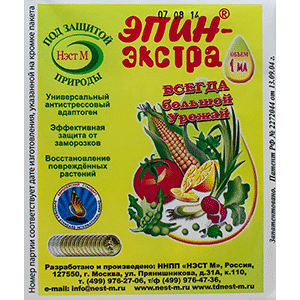 Plant seedlings in flower pots or wooden boxes. Use ready-made soil or pre-disinfected soil from the garden. Keep the seedlings in a warm and sunny place. If there is a lack of light, arrange additional lighting with fluorescent lamps. Water the seedlings every 7 days. It is better to use filtered and settled water. After 10 days, apply liquid organic fertilizers, after another 2 weeks - mineral fertilizers, for example, urea or ammonium nitrate.
Plant seedlings in flower pots or wooden boxes. Use ready-made soil or pre-disinfected soil from the garden. Keep the seedlings in a warm and sunny place. If there is a lack of light, arrange additional lighting with fluorescent lamps. Water the seedlings every 7 days. It is better to use filtered and settled water. After 10 days, apply liquid organic fertilizers, after another 2 weeks - mineral fertilizers, for example, urea or ammonium nitrate.
Muscat de Provence is sown mainly in early May. Pumpkin takes root best in beds after legumes or onions. For 1 sq. m it is recommended to plant no more than 1-2 bushes. To create the most favorable conditions, compost or peat is added to the beds.
Care
How to properly care for the hybrid variety Muscat de Provence? First of all, follow the watering and weeding regime, and also pay attention to the formation of bushes and the application of fertilizers. In addition, do not forget to untangle the lashes and carry out disease prevention.
Weeding
Weeding includes a set of procedures including loosening the beds and removing weeds. Loosen the soil every week, mainly after rains or fogs. Loosening improves oxygen access to the roots. The most common weed in garden beds is bindweed, which is also regularly pulled out along with its roots. Without weeding the beds, it is impossible to get a high-quality harvest.
Watering
After planting, the beds are watered abundantly; the next watering is organized only after 10 days. It is best to use rainwater as it is much softer than tap water. The easiest method to collect rainwater is to install containers and drainpipes on the site. The size of the tank depends on the size of the garden.It is recommended to water the beds after weeding or along with fertilizing.
Fertilizers
For an excellent harvest, alternate mineral and organic fertilizers. The Muscat de Provence variety responds well to the Zdraven mineral complex, which can be purchased at any gardening store. “Zdraven” saturates the bushes with calcium and nitrogen and protects against diseases. The crop also loves liquid bird droppings, which summer residents apply 2-3 times over the entire period. For 1 sq. m use about 100-150 g of fertilizer. In addition to these products, feeding with ash, yeast, whey and nettle is popular.
Features of cultivation and possible difficulties
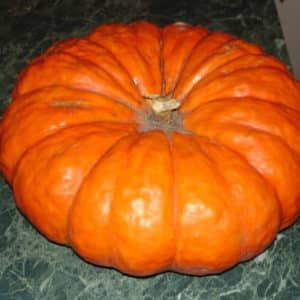 Inexperienced summer residents are faced with the problem of forming bushes. The fact is that for normal development, only 2-3 pumpkins are left on the vines, the rest of the vegetables are removed, and the tops are pinched. It is also advised to leave about 5 leaves, the rest are eliminated. If this is not done, then all the pumpkins will not have enough space and nutrition to grow large. And pinching the top stops the bush from growing when it is no longer necessary.
Inexperienced summer residents are faced with the problem of forming bushes. The fact is that for normal development, only 2-3 pumpkins are left on the vines, the rest of the vegetables are removed, and the tops are pinched. It is also advised to leave about 5 leaves, the rest are eliminated. If this is not done, then all the pumpkins will not have enough space and nutrition to grow large. And pinching the top stops the bush from growing when it is no longer necessary.
If the lashes have grown to 2 m, untangle them and place them on the ground, sprinkling soil on top. Water the sprinkled area; new roots will form there, which will strengthen the plant. If the vegetables themselves are very heavy, build them additional support from scrap materials.
Growing tips from experienced gardeners
To obtain a rich harvest, gardeners advise paying special attention to foliar feeding. For example, spraying with Bordeaux mixture, which protects Muscat de Provence from harmful influences. In addition, summer residents recommend:
- choose the largest ones for sowing seeds;
- use liquid manure as fertilizer;
- add potassium salt and superphosphate twice;
- do not over-moisten the soil;
- Do not apply fertilizers to dry soil.
Diseases and pests
Even with proper care, a hybrid can become a victim of dangerous insects or diseases. Particularly common among them are:
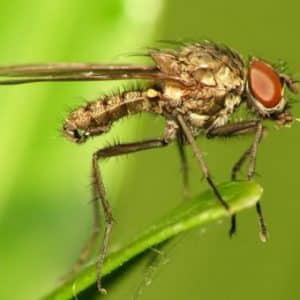 Bacteriosis — characterized by small brown spots on the leaves. At the first signs, immediately spray the plant with a solution of copper sulfate and lime. If the fruits are already infected, remove them and bury them.
Bacteriosis — characterized by small brown spots on the leaves. At the first signs, immediately spray the plant with a solution of copper sulfate and lime. If the fruits are already infected, remove them and bury them.- Root rot - It is a fungus that turns stems and roots brown. The causes of infection lie in improper watering. For treatment, treat pumpkin beds with a solution of copper sulfate.
- Powdery mildew - a fungal infection that appears as a white coating on the leaves. Fungal spores are found in soil or weeds. The fungus is treated with colloidal sulfur.
- Wireworms – These are worms that live underground and destroy roots. The “Bazudin” remedy will help get rid of them. However, be careful when using it, as the drug is toxic.
- Sprout fly affects stems and leaves. As a preventive measure, before sowing, carefully dig up the soil and apply fertilizer. To combat germ flies, use a solution of copper sulfate.
Harvesting and application
Traditionally, harvest begins in mid-September, when pumpkins reach peak ripeness. The fruits are picked together at the stem so that they can be stored for a long time. After harvesting, the vegetables are wiped with a dry cloth and placed in the basement or garage. Muscat de Provence is stored for a long time and does not lose its properties.
The product is used mainly in cooking. Pies, salads, and juice are made from pumpkin. Thanks to its sweet taste, pumpkin makes delicious dietary desserts and baked goods.The vegetable is good both fresh and after heat treatment. In addition to the pulp, the seeds and flowers of the plant are eaten.
Advantages and disadvantages of the variety
The Muscat de Provence variety has become widespread among many summer residents. Why did you like the vegetable? First of all, it is appreciated for:
- ease of care;
- high taste qualities;
- attractive presentation;
- high immunity;
- frost resistance;
- long shelf life;
- versatility in use.
The only disadvantage gardeners note is that sometimes vegetables reach such large sizes that they cannot do without additional support. The Muscat de Provence variety has no more disadvantages.
Farmer reviews
On gardener forums you can find a variety of reviews about the Muscat de Provence pumpkin. Some find the variety productive and tasty, others write that they expected a better harvest.
 Yana, Moscow: “I planted Muscat de Provence for the third time. I value this pumpkin primarily for its sweet pulp, which goes well with many other products. The pumpkins are beautiful and orange. In the fall I store them on the balcony, and in the winter I put them in the pantry.”
Yana, Moscow: “I planted Muscat de Provence for the third time. I value this pumpkin primarily for its sweet pulp, which goes well with many other products. The pumpkins are beautiful and orange. In the fall I store them on the balcony, and in the winter I put them in the pantry.”
Maxim, Omsk: “Of the nutmeg pumpkins, Muscat de Provence is my favorite. She is not capricious in her care; growing such a crop is a pleasure. On average, I remove about 15 kg from one bush. I use it mainly as boiled or baked dishes, I love nutritious juice made from pumpkin, orange, ginger and mint."
Ekaterina, Sochi: “I am a gardener with 15 years of experience, and every year I plant a new variety on my plot. I didn’t like Muscat de Provence because the fruit set poorly. As a result, I harvested 3 times less harvest than stated by the manufacturer.Next year I will definitely plant another Muscat variety, but not Muscat de Provence.”
Conclusion
“Provencal” pumpkin is easy to grow, used in cooking, and even the famous “Jack-O-Lanterns” can be made from it. As befits nutmeg pumpkin, the taste of the vegetable is excellent, as are its commercial qualities. Pumpkin always looks attractive.
The variety is planted throughout the country, be it Siberia or the southern regions. The hybrid rarely gets sick and shows consistently high yields.